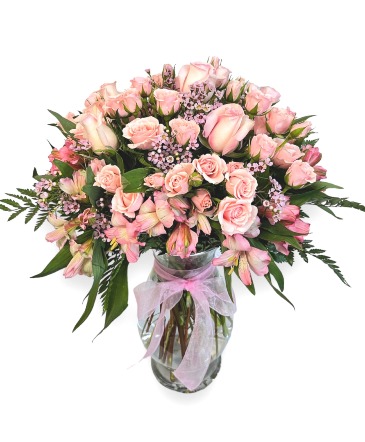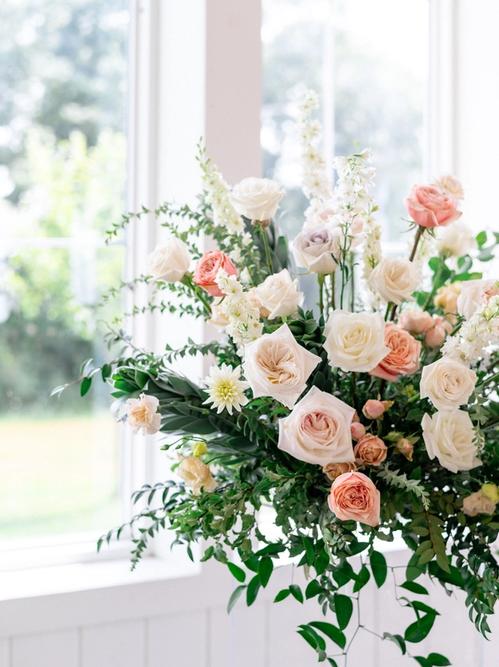Discover the Art of Floral Style: Tips From Specialist Florists
Floral design is not merely an aesthetic endeavor; it is a nuanced art type based in concepts such as equilibrium, proportion, and comparison. Professional floral designers offer vital understandings right into choosing the appropriate blossoms tailored to particular events, making certain that each plan resonates with its intended message.
Recognizing Floral Style Principles
Usually forgotten by amateur flower designers, understanding the essential principles of floral style is essential for creating aesthetically appealing arrangements (florist lockhart). These principles work as the structure whereupon successful flower structures are built, making sure consistency and equilibrium in each development
The secret principles consist of balance, percentage, contrast, rhythm, and unity. Balance describes the distribution of aesthetic weight within a setup, which can be symmetrical or unbalanced. Proportion entails the relationship between the dimension of blossoms and the container, ensuring that each component enhances the others. Contrast, achieved with differing shades, shapes, and structures, adds rate of interest and depth to the layout.

Rhythm guides the visitor's eye through the arrangement, often completed by duplicating shapes or colors. Last but not least, unity ensures that all parts of the style job with each other cohesively, creating a feeling of completeness. By mastering these principles, flower designers can raise their job, changing easy arrangements into sensational visual declarations.
Inevitably, a strong grasp of these flower layout concepts not only improves imagination but additionally fosters a much deeper recognition for the creativity included in floral arrangements (florist lockhart). Through practice and application, novice florists can establish their abilities and develop memorable designs
Picking the Right Flowers
Picking the ideal blossoms is a crucial action in the flower layout process, straight affecting the general aesthetic and performance of the arrangement. To start, think about the celebration; different occasions call for distinctive flower kinds. Romantic setups may benefit from roses, while cheerful celebrations could suit sunflowers or gerbera sissies.
Make use of a shade wheel to determine complementary or similar shade plans that can create a natural look. Furthermore, think about the season; seasonal flowers not just make certain quality but likewise frequently come at a reduced price, making them a sensible selection.
One more vital element is the designated durability of the plan. Some flowers, such as chrysanthemums and carnations, have longer vase lives, while others, like peonies, may shrivel faster. Finally, examine the shapes and size of the flowers in relationship to your style goals. Larger flowers can offer as focal factors, while smaller sized flowers can fill up in spaces and include structure. By attentively selecting blossoms, you can produce arrangements that resonate with their designated purpose and target market.
Strategies for Arrangement

An additional reliable strategy is the "line layout," which stresses the natural lines and shapes of the blossoms. By using long-stemmed flowers, designers can produce a feeling of movement and circulation in the arrangement, drawing the eye along the lines created by the stems. In addition, including varying heights in the arrangement adds depth and rate of interest, enabling the visitor to discover the piece from different angles.
The "color barring" method is additionally beneficial, where shades are grouped with each other to develop strong visual declarations. This technique can stimulate details feelings and established the state of mind of the arrangement. Do not forget the value of adverse space; leaving spaces within the setup enables for taking a breath area, improving the why not look here total aesthetic and stopping congestion. Proficiency of these strategies will most certainly boost your floral design skills.

Seasonal Floral Inspirations
Incorporating seasonal components right into floral designs can greatly improve their charm and significance. By lining Get More Information up floral setups with the transforming periods, flower designers can evoke certain moods, motifs, and shades that reverberate with customers and the environment. Each period uses a special combination of blossoms and foliage that enables creative thinking and motivation.
Autumn's rich tones can be caught with dahlias, chrysanthemums, and decorative lawns, producing cozy, welcoming plans that show the harvest. Winter provides a peaceful visual with evergreens, amaryllis, and seasonal berries, best for stimulating a sense of tranquility and festivity.
Taking Care Of Your Setups
Caring for flower setups is necessary to preserve their appeal and durability. Correct care ensures that your flowers continue to be dynamic and fresh, boosting the visual allure of your room. Begin by positioning your setup in an amazing place, away from straight sunlight and drafts, as severe temperatures can cause wilting and discoloration.
Frequently examine the water degree in the flower holder, guaranteeing it is sufficient to cover the stems appropriately. Replace the water every few days to prevent microbial development, which can reduce the life expectancy of your plan.
Additionally, think about the kind of learn this here now flowers in your plan; some might call for specific care. Stay clear of placing your plans near ripening fruit, as ethylene gas can accelerate wilting.

Conclusion
In final thought, understanding the art of floral style includes a thorough understanding of foundational principles, careful selection of blossoms, and the application of effective setup techniques. Seasonal ideas even more improve creativity, while proper treatment ensures that flower displays keep their beauty and longevity. By integrating these aspects, people can develop impactful arrangements that convey feeling and offer their intended function, eventually enhancing the experience of both the developer and the recipient.